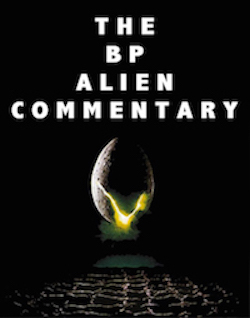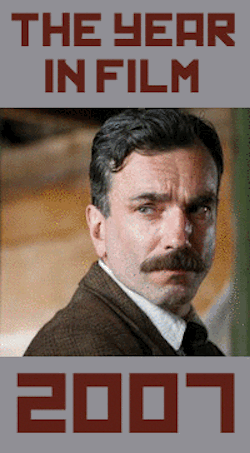Nefarious: Demonic Recession, by Tyler Smith

Cary Solomon and Chuck Konzelman’s Nefarious purports to be a horror movie about spiritual warfare, perhaps trying to evoke The Exorcist and The Omen. Unlike those movies, however, this film is so devoid of frights, one wonders exactly how hard the directors tried to make an effective genre piece. Instead, the film feels more like a dramatic two-hander than anything remotely resembling a scary movie. Sadly, the film fails even at that, not only proving to be a horror movie without scares, but also a drama without feeling.
After kicking things off with a pretty solid fake out, the film settles into a repetitive rhythm that quickly becomes tiresome. A psychiatrist (Jordan Belfi) meets with a convicted murderer (Sean Patrick Flanery) to determine his mental capacity on the night of his execution. During this meeting, the murderer claims to be possessed by a demon named Nefarious. Understandably skeptical, the psychiatrist challenges these claims, only to be rebuked at every turn by the evil entity.
Whether the murderer is actually possessed by a demon or not, the film leaves little room for doubt. Within the first few minutes of the meeting, the film throws aside any possible ambiguity in favor of a straight-forward discussion, complete with in-depth plot and character exposition. Given the disconcerting weight of these ideas, one might assume that the filmmakers would go the route of The Silence of the Lambs, with its haunting riddles and suffocating tension. But, as in their previous work, the filmmakers take no chances. Instead, they choose to tell their story in the most obvious way. And just in case any viewer should come away vaguely unsure of the film’s messages, the film ends with a completely unnecessary scene of detailed explanation (featuring none other than Glenn Beck to spell everything out).
Stylistically, the directors opt to frame the action in the blandest way possible. Taking place in a large empty room deep within the prison, this battle of wits lacks the claustrophobic atmosphere one might associate with a demonic confrontation. Instead, Solomon and Konzelman, with cinematographer Jason Head, frequently cut to expansive wide shots, effectively diffusing whatever tension they have relied so completely on the actors to create.
To whatever degree this film works—as either a horror or a drama—the filmmakers have Flanery to thank for it. As Nefarious, Flanery initially employs an exhausting series of tics and twitches before, thankfully, discarding most of these affectations in favor of a consistent, low-level menace. His commitment to the character is so complete that it unfortunately highlights just how much his co-star, Belfi, is out of his depth. Just as Flanery builds a nice rhythm, Belfi immediately derails it, as his self-consciousness overpowers any emotion he is attempting to convey.
However, it is understandable why any performer would lack on-screen confidence, when given material this sub-par. Aside from a few intriguing moments, the largely obvious dialogue gives the actors precious little to interpret. As such, the film turns into a sort of cut-rate Screwtape Letters, with Nefarious forgoing any sense of mystery, in order to make his intentions plain as day. As with most other faith-based films (and make no mistake, this is one), the filmmakers show a consistent lack of trust in their audience, inadvertently turning the film into a 90-minute sermon.
Ultimately, it is commendable that the filmmakers are attempting to work within a genre that is too-often dismissed by Christian audiences. But sadly, they retreat into their previous faith-based tendencies, throwing off any and all horror trappings so that they might better lecture their audience, who will walk away from the film uninspired and unchallenged.




























